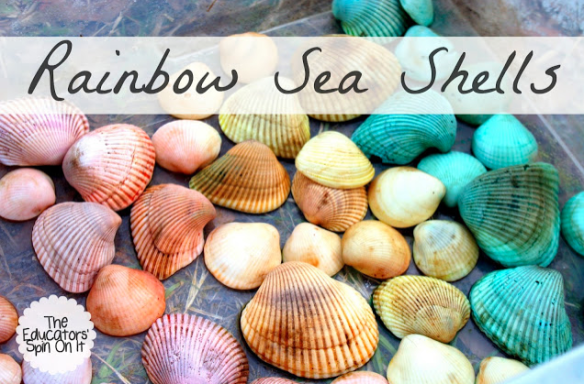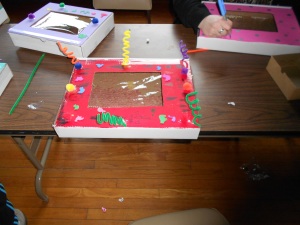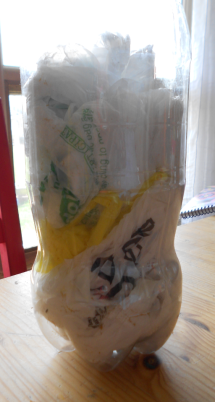 Worms are a great way to have a more productive home garden. Creating a simple worm box is a perfect way to learn about nature plus make excellent compost in small quantities at the same time.
Worms are a great way to have a more productive home garden. Creating a simple worm box is a perfect way to learn about nature plus make excellent compost in small quantities at the same time.
Here’s an easy way to turn plastic cake holders or similar containers (especially those that can “nest” inside each other) into a real working worm farm that would fit under any sink on in any pantry.
Here’s what you need to begin:
Pan for underneath the worm box.
One (or more) plastic container that can “nest” inside each other. One must have a lid.
 Tools for poking holes in the plastic.
Tools for poking holes in the plastic.
Small pieces of wood, legos or plastic objects to keep the main worm bin in a position to drain.
Bedding for the worms such as dried vegetation, dried weeds, a small bit of hay or straw or shredded newspaper.
Food scraps to feed the worms.
Worms!
Squirting water bottle (optional)
———–
Begin by getting your worm house ready! Place your pan beneath where your worm house will be as it will catch the run-off water from the worms. This pan needs to have no holes in it.
Next, poke a series of small pin-prick sized holes in the bottom of your main container. Remember that the goal is to keep the area damp but not soaked, so these holes will allow the water to run into the pan beneath. To aid with draining, make sure you’ve put the small wooden blocks or plastic objects on the pan so your first container sits up a bit and allows for good drainage.
Now you need some worm bedding. You can often find dried leaves, weeds or grass in any yard or park. Straw or hay work as well. Newspaper can work but introduces inks and dyes and may not be a good choice if you are putting your compost into the garden.
Next, make sure you’ve mixed in some of the types of things that serve as worm food. Throw in your discarded banana peels, eggshells, coffee grounds, vegetable peelings and similar objects. You might be surprised how this reduces your trash. If the mixture seems dry, use a water bottle and give it a spritz of two of water so it will be wet and welcoming for your worms.
 Going On A Worm Hunt!
Going On A Worm Hunt!
Sure, can order worms from the internet, then you miss out on all the fun. If you take a walk after a rain, you can often rescue quite a few that will live happily in your worm bin. If you can’t do a post-rain walk, begin digging in a garden or looking under logs or piles of leaves, you’ll slowly find out more about which habitats worms enjoy.
Upkeep? Keep your worm box damp and make sure to remove the compost water that you find at the bottom. It’s really nutritious for plants, so make sure you “feed” it on any plants you have, indoors or out! Also remember to add worm goodies periodically to eat so they always have new food to cycle through for you.
Also, make sure you keep the lid on your box to keep the area damp when not observing the worms or adding water or food.
A Worm Apartment House
If one worm box is not enough, you can turn it into a worm apartment house like the one pictured at the top of this post. To do this, get another plastic container that is the same size and shape. In this container, poke larger holes – large enough so that the worms can crawl through them. Then fill the second container with the same type of bedding and some food scraps and set it on top of the other, placing the lid on top. In this way, once the worms in the bottom container finish their food and leave compost, they will crawl up through the holes and begin on the next batch. You can remove the lower area, use the compost, fill with bedding, replace it on top and begin the cycle again.
It’s a great way to learn about nature, use food scraps instead of trashing them and make useful compost all at the same time!
 Fun Related Posts
Fun Related Posts
Kindergarten Unit on WORMS!
http://www.theusualmayhem.com/search/label/Wormy%20Wednesdays
Compost Bin Sensory Play (This post is so much fun!)
http://trainupachildlearnaswego.blogspot.com/2013/04/compost-bin-sensory-play-wash-and-learn.html
A Worm Box + Worm Lunch Post:
http://www.jdaniel4smom.com/2011/05/muffin-tin-muffin-celebration-of-worms.html
 One of my favorite blogs – Kindergarten Basics Blogspot – always shares simple ideas on how parents and teachers can make learning fun. In this easy craft, kids learn to tie a bow and get to repeat the process over and over to complete a one-of-a-kind wreath for mom (or grandmom) to enjoy.
One of my favorite blogs – Kindergarten Basics Blogspot – always shares simple ideas on how parents and teachers can make learning fun. In this easy craft, kids learn to tie a bow and get to repeat the process over and over to complete a one-of-a-kind wreath for mom (or grandmom) to enjoy.










 Did you know that animal pollinators are needed for 35% of the world’s food crops?
Did you know that animal pollinators are needed for 35% of the world’s food crops?
 Tabitha sent us this suggestion that is so simple, but makes a huge difference:
Tabitha sent us this suggestion that is so simple, but makes a huge difference: Okay, I’ll admit it. I just hate to see a useful item on a curbside trash pile. I have a kindred spirit in Lisa who writes:
Okay, I’ll admit it. I just hate to see a useful item on a curbside trash pile. I have a kindred spirit in Lisa who writes: Jessica writes from Arizona where her family are helping the Earth by eating lower on the food chain. She writes:
Jessica writes from Arizona where her family are helping the Earth by eating lower on the food chain. She writes: